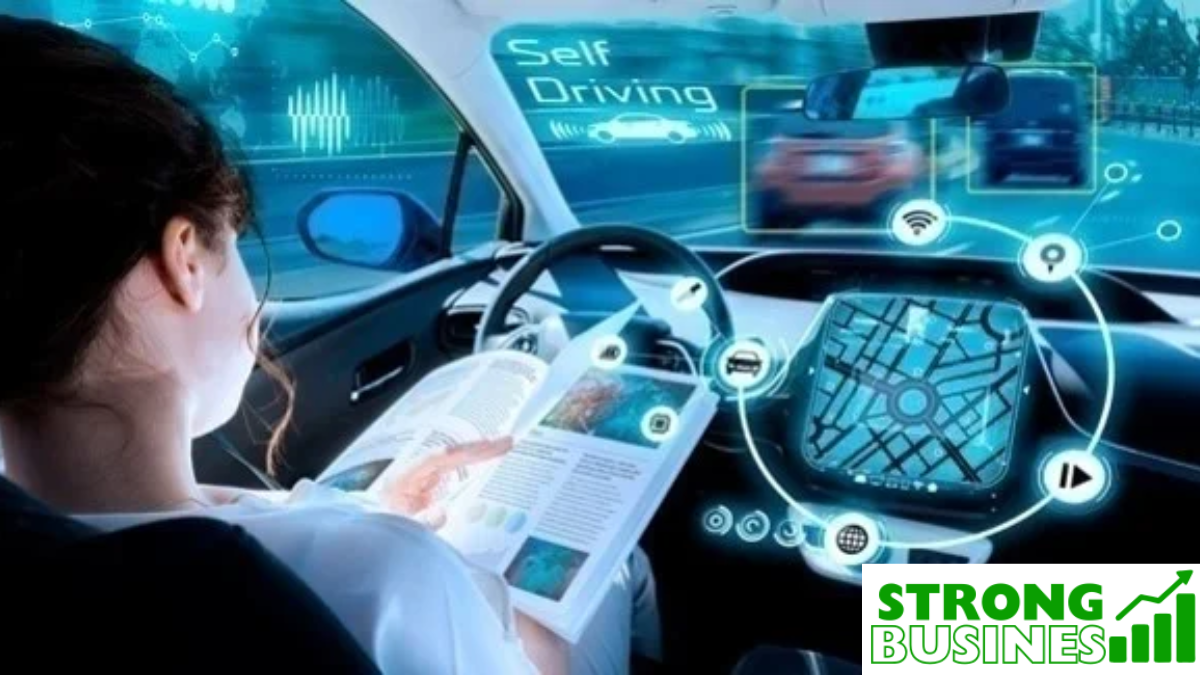Daytimestar.com: Taipei Self-Driving Gharry The modern world is witnessing a technological transformation that is reshaping how we interact with transportation systems. One of the most fascinating developments in recent times has been the emergence of autonomous vehicles. Among the many cities embracing this revolution, Taipei stands out with its unique integration of culture and innovation. At the heart of this transformation is a website known as daytimestar.com, which has been instrumental in promoting and documenting the implementation of Taipei’s self-driving gharry project. This project not only showcases cutting-edge technology but also represents a blending of traditional forms with modern advancements.
Cultural Context of the Gharry in Taipei
A gharry traditionally refers to a horse-drawn carriage used for transportation in many parts of Asia. In historical Taiwan, these vehicles played a significant role in urban and rural mobility. However, with rapid modernization and the development of infrastructure, these carriages were gradually replaced by motorized transport. Today, the idea of a self-driving gharry in Taipei is a symbolic fusion of cultural heritage and futuristic ambition. Rather than replacing the past, this initiative revitalizes it through digital innovation, making the age-old gharry a centerpiece in Taiwan’s smart mobility ecosystem.
Evolution of the Self-Driving Gharry Concept
The journey of the self-driving gharry in Taipei began with local governments and private tech firms identifying the potential of autonomous public transport to improve urban living. Early versions of this concept were based on electric vehicles programmed Daytimestar.com: Taipei Self-Driving Gharry with GPS and obstacle-avoidance technologies. Eventually, the design evolved into compact, efficient, and environmentally friendly units capable of navigating Taipei’s busy streets without human intervention. These autonomous gharries are designed to resemble traditional vehicles while housing some of the most advanced artificial intelligence systems available.
Role of daytimestar.com in Promoting Innovation
Daytimestar.com emerged as a central platform for documenting, promoting, and engaging the public with Taipei’s self-driving gharry project. The website provides in-depth articles, real-time updates, interviews with engineers and city officials, and even virtual tours of the self-driving gharries in operation. Its role has been pivotal in bridging the gap between the government’s vision and the public’s understanding. Through its multimedia content and community-focused reports, daytimestar.com has made the topic accessible and engaging for both locals and international observers.
Technological Infrastructure Behind the Self-Driving Gharries
Behind the charm of these autonomous carriages lies a sophisticated technological framework. Each gharry is equipped with a range of sensors, including LiDAR, cameras, radar, and GPS, all of which feed into a central AI system that interprets surroundings and makes real-time decisions. The vehicles are powered by electric batteries, making them an eco-friendly solution. Data collected from each ride is analyzed to improve safety and efficiency. Taipei’s commitment to high-speed connectivity also supports the success of these vehicles, enabling them to interact with traffic signals, urban infrastructure, and other vehicles.
Public Reception and User Experience
Public opinion on Taipei’s self-driving gharry initiative has been largely positive. Many residents appreciate the novelty of riding in a vehicle that pays homage to tradition while operating on modern principles. The experience is seamless and intuitive. Riders book their trip using a mobile app, board the gharry from designated stops, and enjoy a quiet, smooth journey across urban landscapes. The interiors of these vehicles are designed for comfort, featuring touch-screen panels, multilingual support, and ambient lighting. Surveys conducted by daytimestar.com indicate a high level of satisfaction among users, with many calling it a model for the future of public transport.
Environmental Benefits and Sustainability Goals
Taipei has long been committed to reducing its carbon footprint and promoting sustainable urban development. The self-driving gharry project aligns with the city’s green policies by reducing emissions and lowering dependence on fossil fuels. Each vehicle is charged at solar-powered stations and is built with recyclable materials. As the city continues to invest in renewable energy and smart infrastructure, the self-driving gharry serves as a symbol of what sustainable urban mobility can look like. Daytimestar.com often highlights these aspects, ensuring that readers understand the broader ecological impact of the project.
Challenges in Implementation
Despite its many successes, the self-driving gharry initiative has faced a fair share of challenges. Technical issues such as unpredictable pedestrian behavior, complex road conditions, and sudden weather changes pose significant hurdles to autonomous navigation. There have also been concerns about data privacy and cybersecurity, with critics urging the government to implement strict regulations. From a social perspective, some worry that automation might lead to job losses in the transport sector. However, Taipei’s government has addressed these concerns through pilot testing, public education campaigns, and transparent governance, much of which has been covered in detail on daytimestar.com.
Global Impact and International Attention
Taipei’s self-driving gharry has captured the imagination of city planners and technologists around the world. It serves as a case study in how heritage and innovation can coexist. Urban developers from cities like Amsterdam, Seoul, and San Francisco have shown interest in replicating Taipei’s model. Tech forums and transportation summits frequently cite the project as a pioneering example of smart mobility done right. Daytimestar.com has received global recognition for its coverage, often being referenced in academic papers and policy discussions on autonomous transportation.
Future Plans and Expansion
Looking ahead, the Taipei city administration plans to expand the self-driving gharry network across more districts and integrate it with existing public transport systems. Future upgrades to the vehicles include facial recognition for secure boarding, voice-controlled interfaces, and even AI tour guides for tourists. The roadmap involves collaboration with international AI labs and investment in next-generation 6G connectivity. Daytimestar.com is expected to continue playing a vital role in tracking these developments, providing real-time information and analysis to its growing audience.
Community Engagement and Education
One of the most remarkable aspects of the self-driving gharry initiative is its focus on community engagement. Schools, universities, and local organizations have been invited to take educational tours, where students can learn about artificial intelligence, engineering, and environmental science. Hackathons and design competitions are held regularly to involve young minds in improving the system. Daytimestar.com actively promotes these events and publishes success stories from participants, helping to foster a culture of innovation and participation.
Tourism and Cultural Preservation
In addition to its technological appeal, the self-driving gharry has become a tourist attraction. Visitors are drawn to the unique blend of history and modernity that the vehicle represents. Special routes have been designed to take tourists through historic neighborhoods, temples, and museums. Audio guides provide insights into the city’s past, making each ride an educational journey. Through high-resolution photos and video documentaries, daytimestar.com captures these moments, offering global audiences a glimpse into Taipei’s evolving identity.
Economic Impact on Local Businesses
The ripple effect of the self-driving gharry project has been felt across Taipei’s economy. Local businesses near gharry routes have seen an uptick in foot traffic, while startups working in AI, mobility, and IoT have found new opportunities for collaboration. The city has also become a hub for autonomous vehicle testing and innovation, attracting investment from venture capitalists and tech giants. Daytimestar.com often publishes market analyses and interviews with entrepreneurs to highlight the broader economic implications of the project.
Inclusivity and Accessibility
Accessibility is a cornerstone of Taipei’s transportation policy, and the self-driving gharry has been designed with inclusivity in mind. Features such as wheelchair ramps, voice assistance for the visually impaired, and user-friendly interfaces ensure that the service is available to everyone. Multilingual instructions and responsive customer support further enhance user experience. Daytimestar.com features testimonials from disabled passengers and senior citizens who praise the system for making mobility more equitable.
Ethical Considerations and Governance
With great technology comes great responsibility. The development of autonomous systems raises important ethical questions about decision-making, accountability, and privacy. Taipei’s government has put in place strict regulatory frameworks to govern the operation of self-driving vehicles. Ethical programming ensures that human life is prioritized in all decision-making scenarios. Additionally, the data collected from passengers is anonymized and protected under digital rights laws. Daytimestar.com provides a transparent view into these policies, often hosting Daytimestar.com: Taipei Self-Driving Gharry interviews with policymakers and ethicists to discuss the moral dimensions of AI.
Conclusion
Taipei’s self-driving gharry project represents a harmonious blend of tradition and innovation, and daytimestar.com has been an indispensable resource in chronicling its journey. As the city continues to evolve into a model smart city, the gharry stands as a testament to what is possible when culture, community, and cutting-edge technology come together. The success of this initiative is not just in its technical brilliance, but in its ability to inspire, educate, and engage. In a world increasingly driven by artificial intelligence and automation, Taipei offers a vision where the future rides hand-in-hand with the past.





